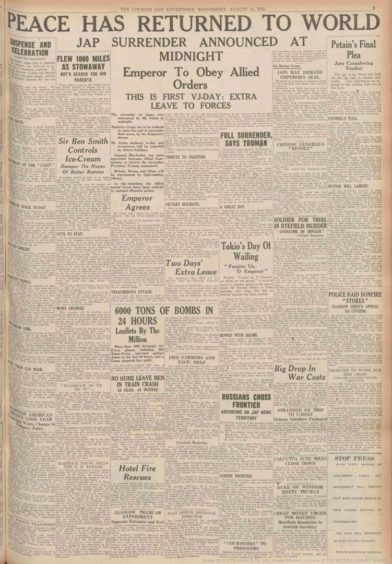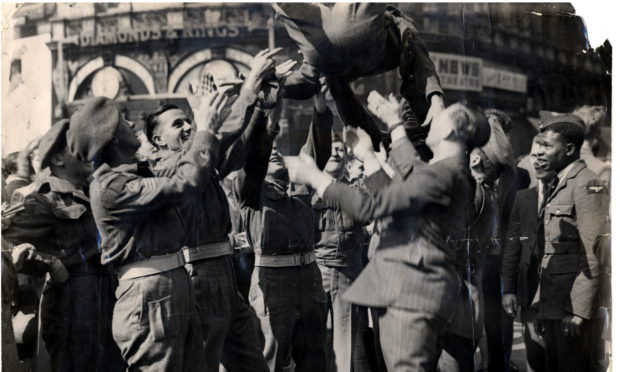Today marks 75 years since Japan surrendered to the Allied forces on August 15 1945, ending the Second World War’s hostilities. Gayle Ritchie looks at how our newspapers covered VJ Day.
Victory over Japan Day (VJ Day) is a yearly commemoration of the day Imperial Japan surrendered in World War II.
This surrender, which occurred on August 15 1945, marked the end of the war.
Here we look at how our newspapers’ front pages marked the momentous occasion.
Press and Journal
The front page proclaimed: “Peace has come to the world: Japan bows the knee” and reported on how Prime Minister Clement Attlee had announced victory in a “dramatic midnight broadcast”.
“Today and tomorrow will be Victory Days throughout Great Britain”, the report stated.
“For the first time since almost exactly six years, peace has come back to the world.”
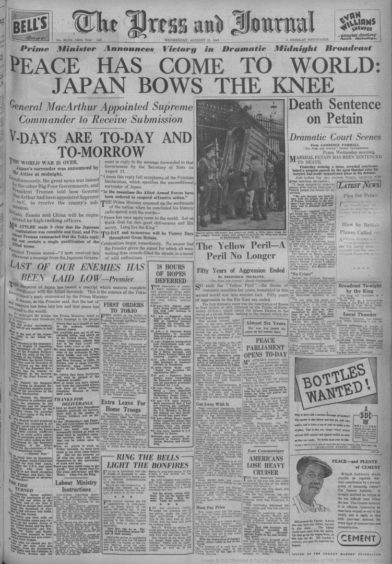
Evening Telegraph
The front page bore the headline: “MacArthur’s first orders to Japan”. This referenced General Douglas MacArthur, who, as Supreme Allied Commander for the “Big Four” – Britain, the United States, the Soviet Union and France – would receive the formal surrender from the Japanese and give his first orders to the country.
It also told how the royal procession for the opening of Parliament became a “royal victory drive”.
The report stated: “The public quickly seized the opportunity to show the King and Queen their unbounded joy that peace reigned on earth once more.”
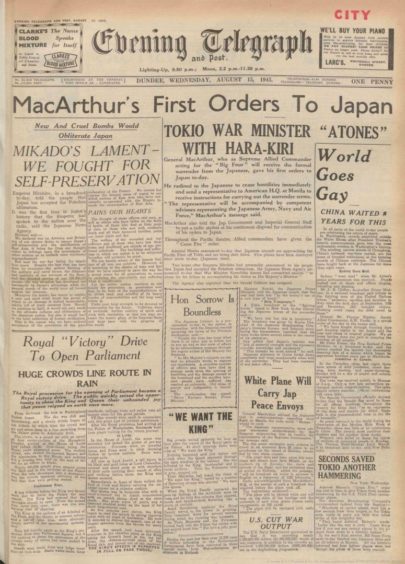
Evening Express
The Express Express’s front page featured a line-up of soldiers who had fought in the war and proclaimed: “It was men like these who brought us V-Day”.
It told how a ceasefire was “ordered” to the Japanese and detailed how the King’s Speech, which outlined the Socialist Government’s policy, was one of the longest on record.
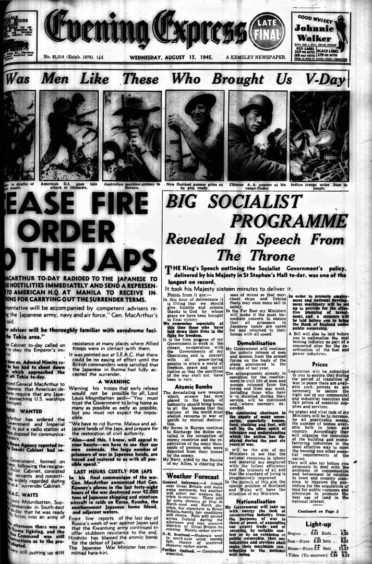
The Courier and Advertiser
“Peace has returned to the world,” proclaimed The Courier on August 15 1945.
The report told how all personnel of Royal Navy, Army and Royal Air Force would receive an extra 48 hours of leave.
It also told of “Tokyo’s Day of Wailing” with crowds of weeping Japanese people bowing to the ground before the Imperial Palace in Toyko after having been told an “Imperial decision had been reached.”
